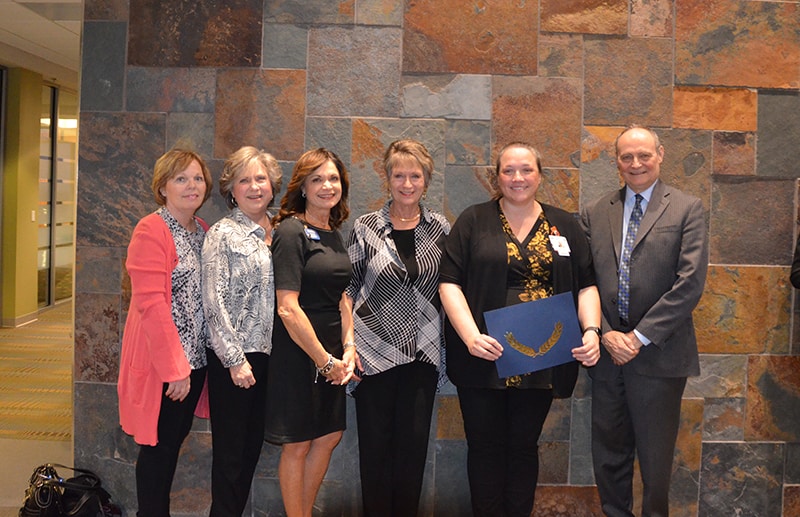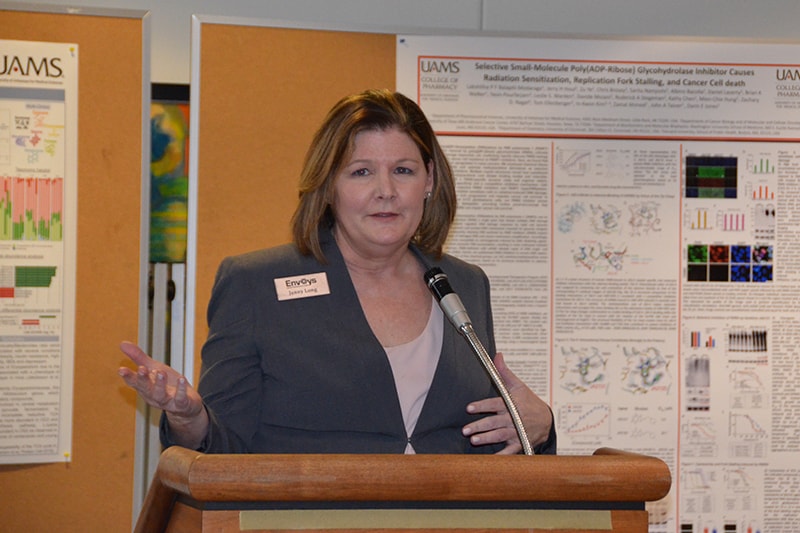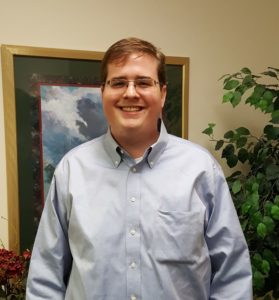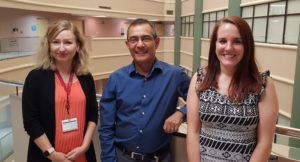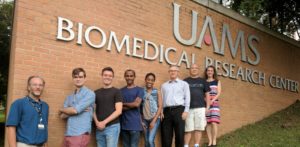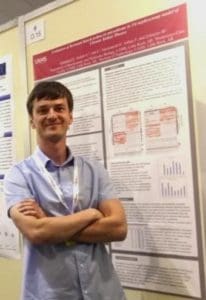
Emilie Darrigues, Ph.D., is one of four new HSIE Scholars announced by TRI. (File photo, by Benjamin Krain)
TRI Names Four Entrepreneurship Scholars
The UAMS Translational Research Institute Health Sciences Innovation and Entrepreneurship (HSIE) Postdoctoral
Training Program has named four postdoctoral scholars for its class of 2022. The scholars, selected in a competitive application process, will begin two years of mentored entrepreneurship training July 1.
The HSIE Postdoctoral Scholars – all from the UAMS College of Medicine – their mentors and project plans are:
Emilie Darrigues, Ph.D., will be mentored by Analiz Rodriguez, M.D., Ph.D., in the Department of Neurosurgery. Her research project will focus on improving circulating-tumor DNA detection in glioblastoma liquid biopsies and devising therapeutic nanoparticles as a strategy to specifically target glioblastoma.

Shana Owens
Shana Owens, Ph.D. Candidate, will be mentored by Craig Forrest, Ph.D., in the Department of Microbiology and Immunology. She plans to develop an improved gammaherpesvirus (GHV) vaccine.

John Sherrill
John Sherrill, M.P.H., Ph.D. Candidate, will be mentored by David Bumpass, M.D. in the Department of Orthopaedic Surgery. He proposes to design a customized 3D printed stabilizer for orthopaedic applications.
Zachary Waldrip, Ph.D., will be mentored by Marie Burdine, Ph.D., in the Department of Surgery, Division of Surgical Research, at Arkansas Children’s Research Institute. Dr. Burdine has a secondary appointment in the Department of Biochemistry and Molecular Biology. He will continue research focused on targeting specific kinases to improve transplant immunotherapy.


